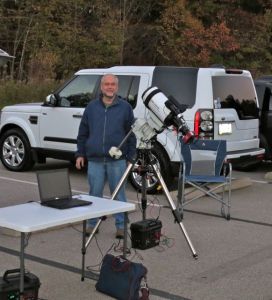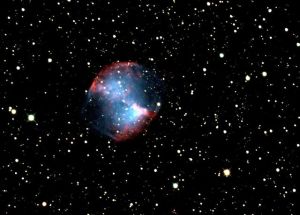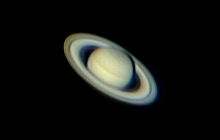Intermixed with my ham radio activities this summer I have started to dabble in Astrophotography. A camera is similar to a very sensitive receiver. It is able to give very nice views of faint stellar objects that are often barely visible through the telescope’s eyepiece.
This photo was taken at Burkhart Creek County Park, in Morgan County Indiana. This park is a nice dark site for central Indiana. It is located about 35 mile Southwest of Indianapolis.
On this particular night the temperature dropped rapidly and dew began to cover everything soon after sunset. The black strap on the front of the telescope is a dew heater which keeps the dew from condensing on the telescopes optics.
As a newcomer to astrophotography, I have learned something new during each outing. On this particular outing I discovered that my setup was not well balanced; thus overloading the Declination drive motor. I made some temporary adjustments and was at least able to take the following image of the Dumbbell Nebula (Messier 27).
Once I got home, I corrected the balance issue. Now if we can just get some clear skies, I will try some more astrophotography.
73,
Fred, KC9QQ



